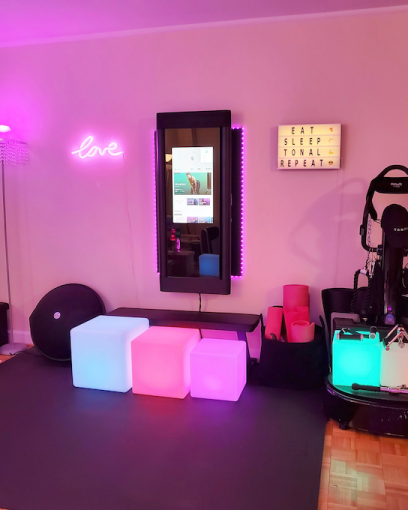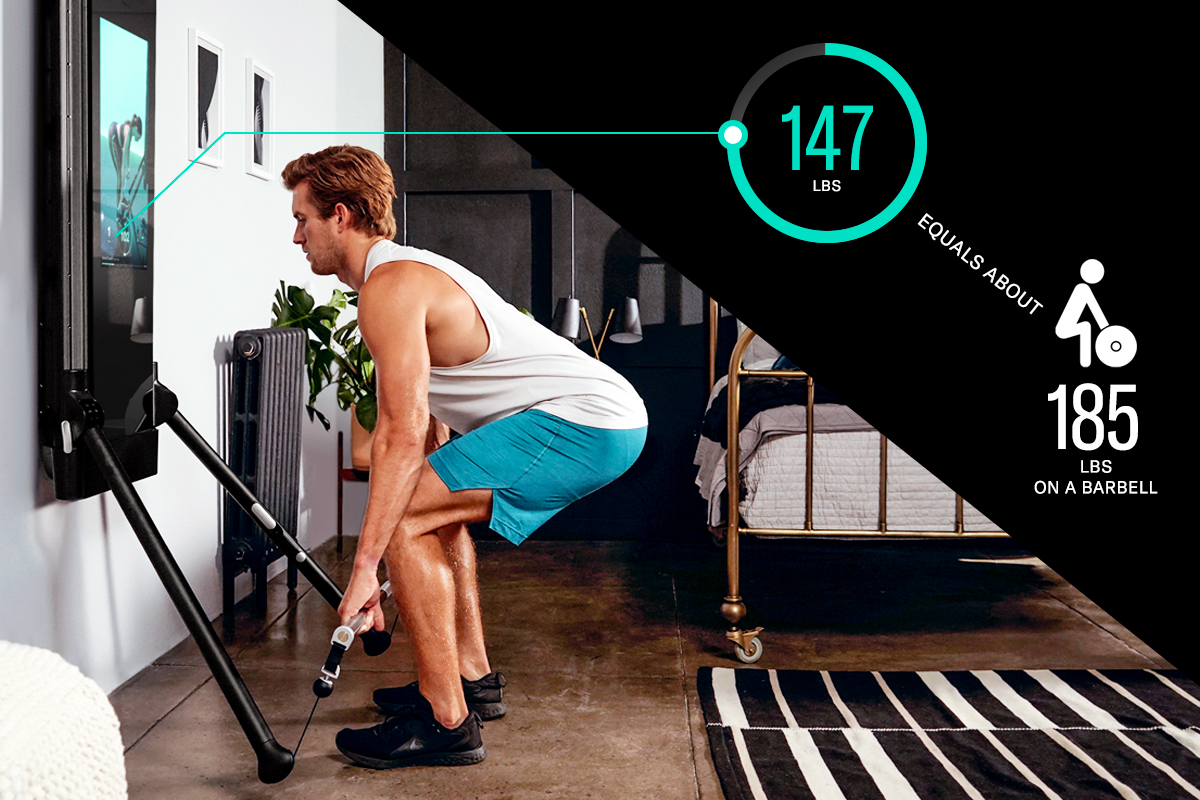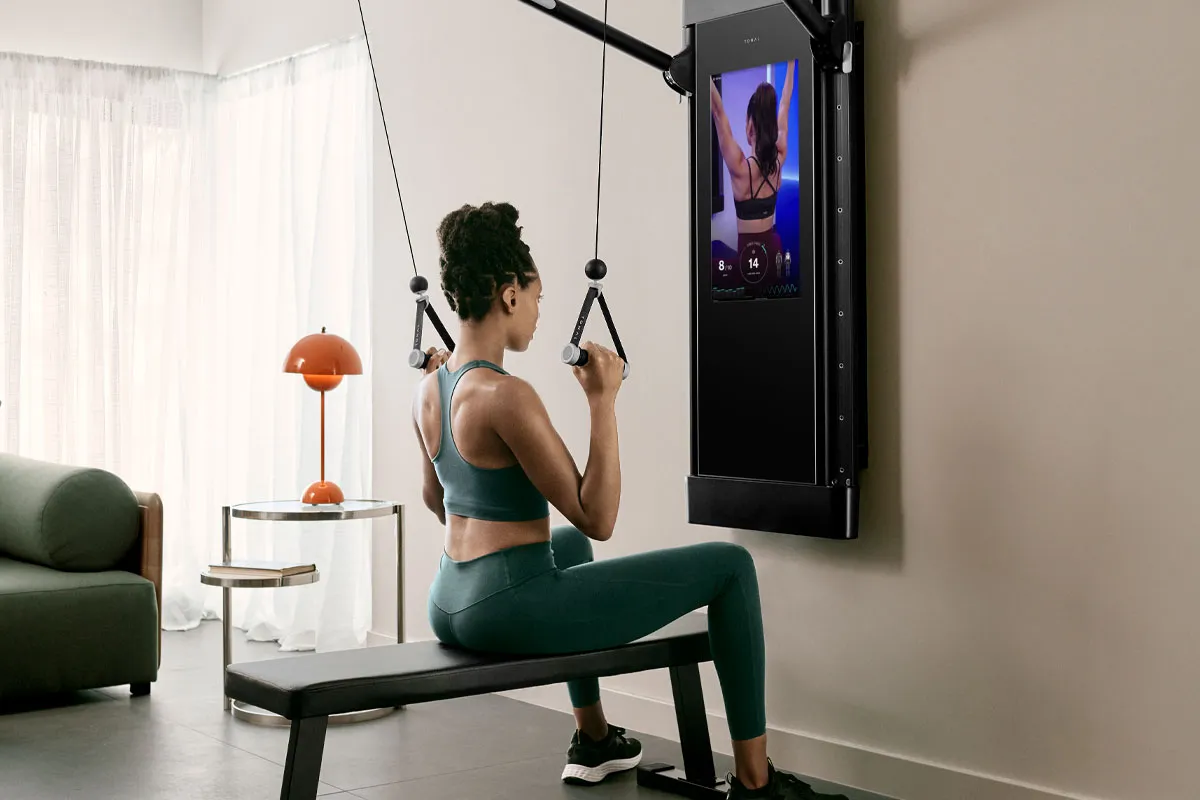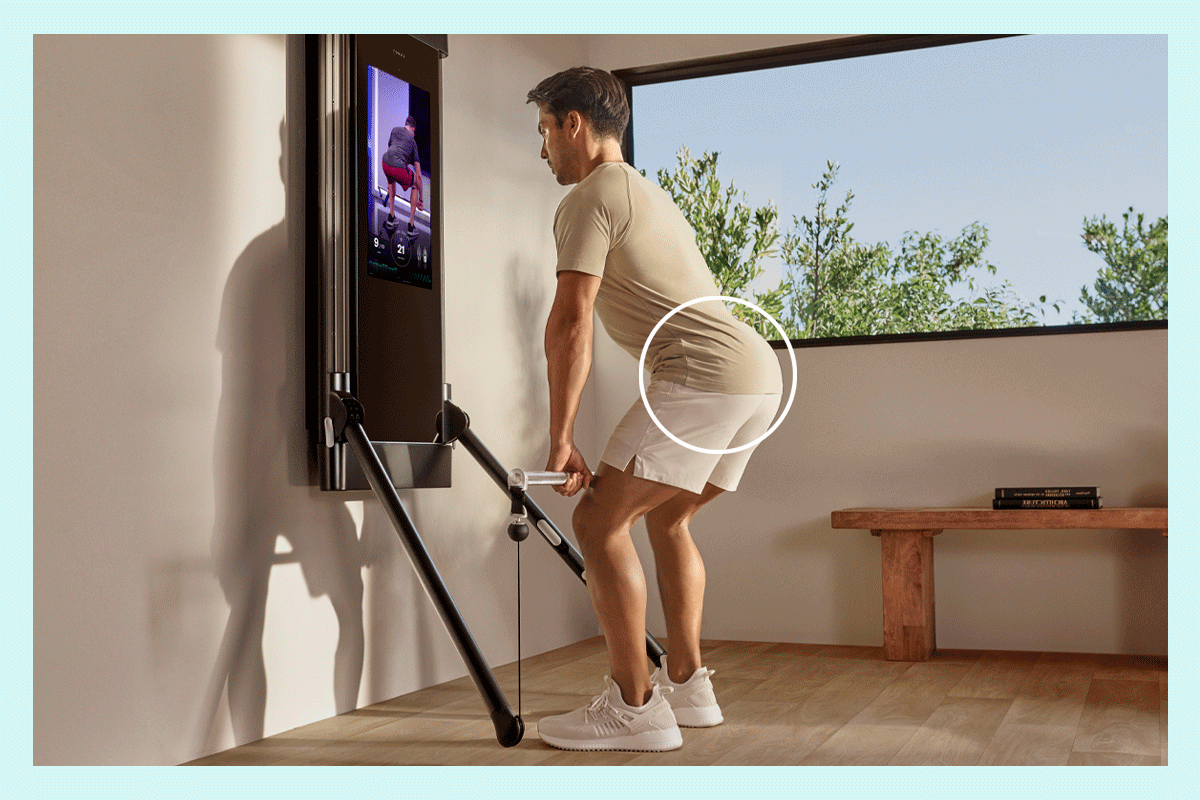Use this expert guidance before you start building out your home gym.

You’re ready, you’re committed, you’re excited…and you have absolutely no idea what to do with your home gym setup. It’s a common conundrum for aspiring and established exercise buffs who want to get their fitness on without ever having to leave the house.
There are some serious questions to consider when planning out how to set up your home gym: Which non-negotiable equipment should you stock up on? How much space do you really need? And how can you make your workout space so inviting, you’ll actually want to spend time in it? Here are some tried and true expert tips for nailing the best home gym setup possible.
Prioritize Multi-Use Equipment
According to personal trainer, Pilates instructor, and nutrition counselor Whitney Cole of Fitness + Fuel in Marina del Rey, California, it’s crucial to invest in home gym equipment that does double (or even triple or quadruple) duty.
“Anything in the space should be able to serve more than one purpose,” says Cole, who along with her husband, Byron Paidouss, an exercise physiologist, personal trainer, and sports performance coach, offers clients training services as well as home gym design guidance. “We cannot justify delegating limited floor space to single function equipment like a machine for biceps or hamstring curls, [so go for] versatile strength training equipment that adjusts to fit a variety of body sizes and shapes.”
Tonal’s all-in-one home gym is ideal for compact spaces, since it can replace over a dozen pieces of fitness equipment. Plus, it leaves valuable floor space open so you can use that area for movement rather than bulky machines.
Choose Quality Equipment
Choosing top-of-the-line products may be more challenging due to the investment, but it will pay off more in the long run, according to certified trainer Sean Sackmann, assistant general manager of New York’s Remedy Place social wellness club, and a partner with SPX Fit, which offers health and wellness advisory services including home gym design consultation.
“Buy quality pieces of equipment,” he says. “Too many people try to save money by buying equipment that’s more economically appealing, but they are manufactured poorly. Over time, this will cause you to spend more money or go back to the commercial gym you hate. Your health and longevity should be a major priority in your life. If you’re building a home gym, look at it as an extension of that. This isn’t an expense, it’s an investment into your health.”
Plan Before You Pay
Think about what type of exercise you plan to do, and visualize how you’d go about a routine before buying and setting up equipment. The last thing you want is to have to rearrange large pieces of equipment, or let a machine turn into a place to hang laundry because it never gets used.
“Lay it all out before purchasing,” Sackmann says. “At SPX, we help design the space through architectural plans to ensure each piece of equipment fits within the space. If you already have equipment, keep in mind the function of the equipment while laying it out. At the end of the day, this really depends on your workout style. If you like HIIT training or circuit training, you will arrange the room differently than someone who’s strength training.”
You’ll also want to think critically about what you actually need. If you despise running but feel compelled to fit in a treadmill just because it’s a typical gym staple, you might want to consider more compact cardio options like a step or jump rope. Or, take your cardio outdoors and free up floor space for strength equipment.
Be Sure You Have Room to Move
“Obviously the more space, the easier it is to come up with a functional design,” Cole says. “You’re there to train, so you have to be able to move. If you cannot move in all directions forget about it.” Cole says her absolute bare minimum measurement recommendation for clients is their height plus two feet in all directions, which is closely aligned with the space requirements for Tonal.
The Best Home Gym Setup Includes Choosing the Right Room
Not everyone has the luxury of selecting from a number of rooms, but if you’re able to choose, Sackmann says the basement or garage is the absolute best place for a home gym. “Obviously temperature is going to be an issue in the garage sometimes, but tough it out, and you’ll be better for it,” he says. “If that’s an issue for you as it is for many people, the basement is a more controlled space temperature-wise, but you may run into problems with the ceiling height.”
Cole adds that basements and garages have their pros and cons (she doesn’t love the lack of natural light in most underground spaces, but ventilation can be a major sell for garage gyms). The most important thing, she says, is to pick a room you actually want to visit frequently. “Make it a room you like spending time in,” she says. “If you hate the room, chances are you won’t work out in it as much.”
Mood Lighting, But Make It Safe

While fun fluorescents may set a party vibe, Cole says visibility is the goal when you’re partaking in serious workouts.
“To properly see both the equipment you’re working with and your own form, we recommend good lighting,” she says. “If you’re not able to get much natural sunlight, it definitely helps to add ceiling lighting to illuminate the whole room.”
While mood lighting, such as these lit-up Tonals, can help you get in the zone in your home gym setup, it’s also important that you’re able to properly see so you can avoid tripping over equipment and risking injury. Make sure you have options depending on how you’re planning to work out.
Welcoming Wall Colors
Painting your walls can be a great way to add some character to your gym. But think about what colors will help you actually focus on your work out.
“I would stay away from bright colors within the gym,” Sackmann says. “Sometimes it’s a little overwhelming if you walk into a space and the walls are super bright while you are trying to focus on your workout. If you absolutely need to put something bright in the room, make sure it’s just accents.”
Consider an accent wall or adding motivational quotes.
Keep Accessories Organized

There’s nothing worse than tripping over a forgotten jump rope or stubbing your toe on a random dumbbell. Stocking up on accessories is important — but making sure they have their own dedicated homes within the workout room will ensure you stay as safe as possible and maintain a clear, clutter-free space.
Sackmann recommends storage accessories made from millwork, a type of wood produced at a factory or mill. “This is a great option and keeps the aesthetic of the space in check,” he says. “You can build a closet space with shelving and drawers to store all of the accessory items. You can also add a counter top to place water bottles, towels, phones or any other items you may not want to keep on you or put on the floor.
If you don’t have this luxury, you can head to a retailer like Rogue Fitness and get all your storage solutions there. Just be mindful of the dimensions of these solutions and the space you have left in the room.”
Don’t Overlook Safety When Placing Equipment
Most home gym setup considerations are for aesthetics and preference, but some are for your own safety and well-being, so always read all the instructions for each piece of equipment carefully.
“Treadmill placement is a very big deal to me,” Sackmann says. “A good practice is to face it toward the wall or window and never have [other equipment] too close to the back side of it.”
Opt For Thick Flooring
Even if you’re not doing jumping jacks on the top floor of an apartment building, you’ll still want to get some cushioning under your feet. “Don’t go cheap on flooring,” Cole says. “Get commercial grade rubber flooring, or you may regret it in the long run. Those ‘puzzle piece’ kids’ playroom type rubber floors are garbage.”
Sackmann says ¼-inch thick rolled rubber flooring works for those with no plans to drop weight on the floor like when using Tonal, but he recommends ½-inch thick flooring for safety.
Think Function First
“Prioritize function over aesthetic, so that you can fully utilize your space and equipment,” Cole says. “We often end up having to redo gyms that people have unknowingly loaded with equipment they learn they despise using and that pisses them off every time they see it, making their gym less of an inspiring oasis and more of a negative money pit.”
In the end, how you design your space is totally up to you, but if you’re still not sure how to complete the home gym setup of your dreams, there’s no shame in asking for help from a pro.
“If in doubt, hire a professional to help you make your dream home gym a reality,” Cole says. “They likely have access to manufacturers to obtain the best prices on your equipment. Most importantly, they can talk you through the pros and cons of particular pieces manufactured by various brands, such as lifetime value, durability, functionality/utility, repair record, footprint, etc, so you nail your gym on your first attempt, love spending time in it, and get the results you desire on a legitimate timeline.”


